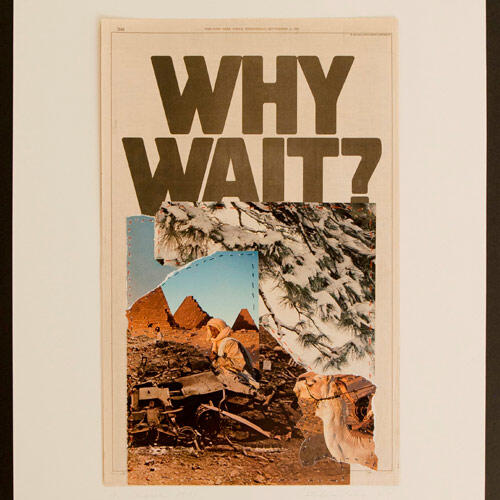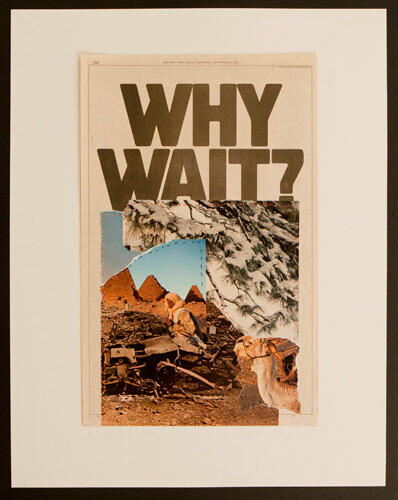Catalina Parra
at MINI/Goethe-Institut Curatorial Residencies Ludlow 38, New York
Catalina Parra (Chilean, born 1940) is a conceptual artist, whose career spans from the early 1970s to the present, addressing contemporary socio-political issues through the appropriation of images and language taken from mass media. Her artistic production can be divided into three distinct periods of her life that correlate with her travels to Germany (1968-72), Chile (1973-80), and the U.S. (1980 to today), having arrived in New York on a Guggenheim Fellowship. She has been the subject of several national and international exhibitions, and this latest one from the Goethe Institut, curated by Tobi Maier, showcases a remarkable, cohesive panorama of her works from 1970-2010.

Parra’s collages and photomontages demonstrate her uncanny sensitivity and ability to deconstruct imagery and content found in mass media by subverting its contradictory message through manipulation and appropriation of its visual language. By reassembling and juxtaposing images taken from newspapers and magazines, Parra challenges the viewer to reinterpret the social, economical, and political issues at hand. In her collage series The Human Touch (1989) and Why Wait (1991), for example, Parra addresses issues such as poverty, war, hunger, torture, and censorship by literally stitching polarizing images together onto the newsprint itself and placing them under generic, somewhat ironic, advertisement headings. Parra attributes the act of suturing to an indigenous Chilean myth, Imbunche, where the orifices of a living being are sewn shut to prevent evil from escaping or manifesting itself, acting in turn as an allegory for censorship, violence and repression. Parra’s political awareness comes from experiencing first-hand the social injustices in her native country, to which she returned in 1973 at the cusp of Salvador Allende’s coup d’état staged by Augusto Pinochet.
The exhibition also includes videos by Parra, such as USA, Where Liberty is a Statue (1987), commissioned by the Public Art Fund as part of its Messages to the Public series (1982-90), which highlighted media-based artwork from artists such as Jenny Holzer, Keith Haring, David Hammonds, and Alfredo Jaar. When installed in 1987, the thirty-second video was on view for a month at a light board in Times Square, above the news ticker, boldly questioning the very icon of freedom and turning the Roman Goddess, Libertas, into a static, non-progressive symbol. The exhibition features the storyboards alongside the video, providing the viewer with better insight into Parra’s thought-process. In another video, FOSA (2005), Parra documents a land art piece resembling a mass grave at an indigenous site by the Atacama Desert in Chile. Commissioned by a local gallery, this massive excavation functions as a burial place for the thousands of people who disappeared during Pinochet’s dictatorship.
Since living in New York, Parra has devoted herself to teaching art to disadvantaged teenagers and underprivileged children at places such as the New Museum and El Museo del Barrio, where the link between arts and education plays a significant role to her. At 71 years of age, Parra remains active with her work and currently has another traveling solo show due to arrive in Chile this fall.
-
 Why wait nr.3, 1991. Printed paper sewn with thread to newspaper on paper. Courtesy the artist.
Why wait nr.3, 1991. Printed paper sewn with thread to newspaper on paper. Courtesy the artist.
Por qué esperar n°3, 1991. Papel impreso cosido con hilo sobre periódico. Cortesía de la artista.




